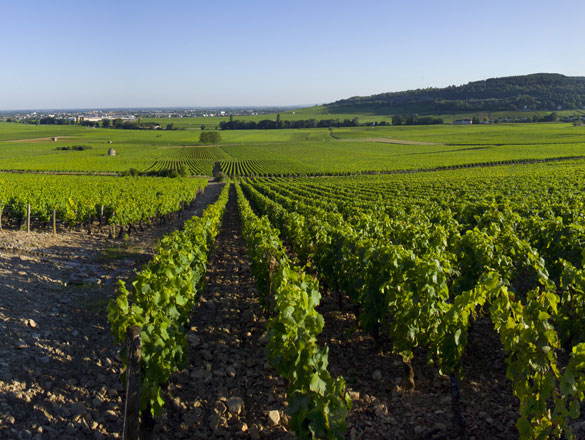

The vineyards of Bourgogne produce some great wines with a historical and international reputation. However, the region is not simply limited to its iconic appellations. In addition to its Village Premier Cru and Grand Cru AOCs, it also produces a range of wonderful Régionale and Village appellations to explore.
You will also find a full list of the Bourgogne’s Climats and lieux-dits on this page.
Check out the complete list of the 84 Bourgogne appellations.
However, your exploration has only just begun. Bourgogne wines have never before offered such high quality. Besides our range of internationally celebrated wines, try some of our lesser-known appellations where there are lots of surprises in store.
And for a fun way to find out more about the wines on offer, try out our “Which Bourgogne wine is right for me?” quiz, or check out Bourgogne Maps to take an interactive tour of the region.
Village appellation
VIGNOBLE DE LA CÔTE DE BEAUNE
31 juillet 1937
Reds - Pinot Noir.
Whites - Chardonnay, Pinot Blanc.
Area under production*:
1 hectare (ha) = 10 000 m2 = 24 ouvrées.
Reds: 300.08 ha (including 125.31 ha Premier Cru).
Whites: 47.79 ha (including 11.87 ha Premier Cru).
Average annual yield**:
1 hectolitre (hl) = 100 litres = 133 bottles.
Reds: 11,864 hl (including 4,681 hl Premier Cru).
Whites: 1,979 hl (including 439 hl Premier Cru).
*In 2022 **5-year average, 2017-2021
Appellation Village of the Côte de Beaune region (Côte-d’Or).
This appellation includes 22 Premiers Crus Climats.
Producing commune: Savigny-lès-Beaune.
On the label, the appellation SAVIGNY-LÈS-BEAUNE and SAVIGNY-LÈS-BEAUNE PREMIER CRU may be followed by the name of the Climat of origin.

Red: the red is a deep cherry colour with garnet highlights. It boasts a bouquet of small red and black fruits (blackcurrant, cherry, raspberry) and flowers (violet). The body is ample and discreetly tannic and the fruit remains present. Frequently one will find an elegant hint of Morello cherry. Roundness, volume, power and balance are all here, and in just the right proportions.
White: this wine is sometimes gold with emerald highlights, sometimes pale straw colour. Its nose is flowery and light-hearted. Its bouquet frequently evokes butter and brioche with notes of lemon, grapefruit, and occassionally a touch of minerality. A lively attack helps to make this a clean, straightforward wine - quite fleshy, persistent, and occasionally with a touch of spice.

Red: its solid, mouth-filling power would be a match for good cuts of beef, or even foie gras poêlé. With a crispy roast fowl, the wine’s fleshiness would compensate for a certain dryness in the fibrous flesh of the bird and it would likewise support in the same way more aromatic poultry dishes (glazed or caramelised). For cheeses, it would do better with sweeterflavoured types such as Chaource, Brie de Meaux, Tomme, Reblochon, Cantal, Mont d’Or, Epoisses.
Serving temperature: 15°C.
White: its lively and straightforward attack would suit fresh-water fish in white sauce, omelettes, or scrambled eggs, while its rich and unctuous bouquet would deliver an attractive and restful finish. It proves a worthy companion to goat cheeses, Gruyère, Comté, and Cîteaux.
Serving temperature: 11 to 12°C.

Between the Hill of Corton and Beaune, the landscape opens up like a map unfolding. The hills of the Côte de Beaune recede a little on either side of the little river Rhoin. These vineyards are of ancient lineage. For much of their history, they belonged to the domaine of the Dukes of Bourgogne, to neighbouring religious houses, or to the Knights of Malta. An imposing 14th century castle testifies to the appellation’s aristocratic qualifications. The AOC status dates from 1937.

The gradient is gentle at first but stiffer as one goes higher. Altitude varies from 250 to 400 metres. The lower slopes consist of alluvia from the Rhoin.
Higher, the geology is that of the Hill of Corton. At the Pernand-Vergelesses end, exposure is southerly and the soils are gravelly with a scattering of oolitic ironstone. Lower down, the red brown limestone becomes more clayey and pebbly. Opposite, the slope faces East and the limestone soils include some sand.
